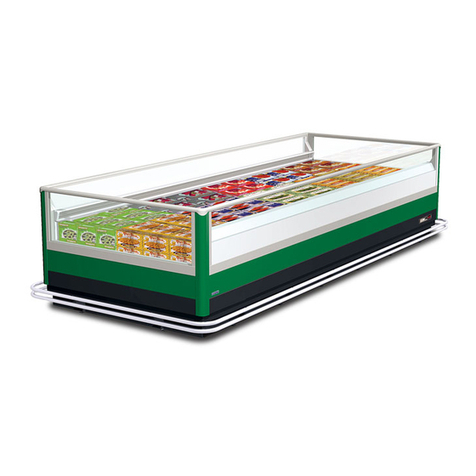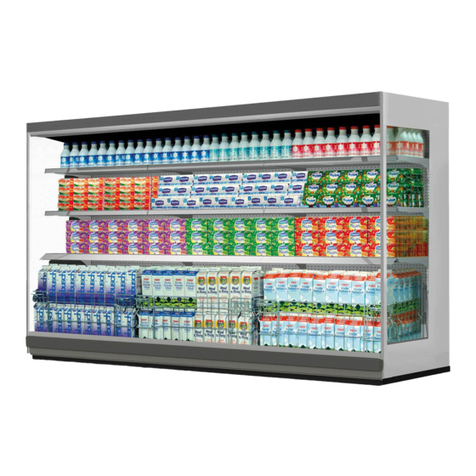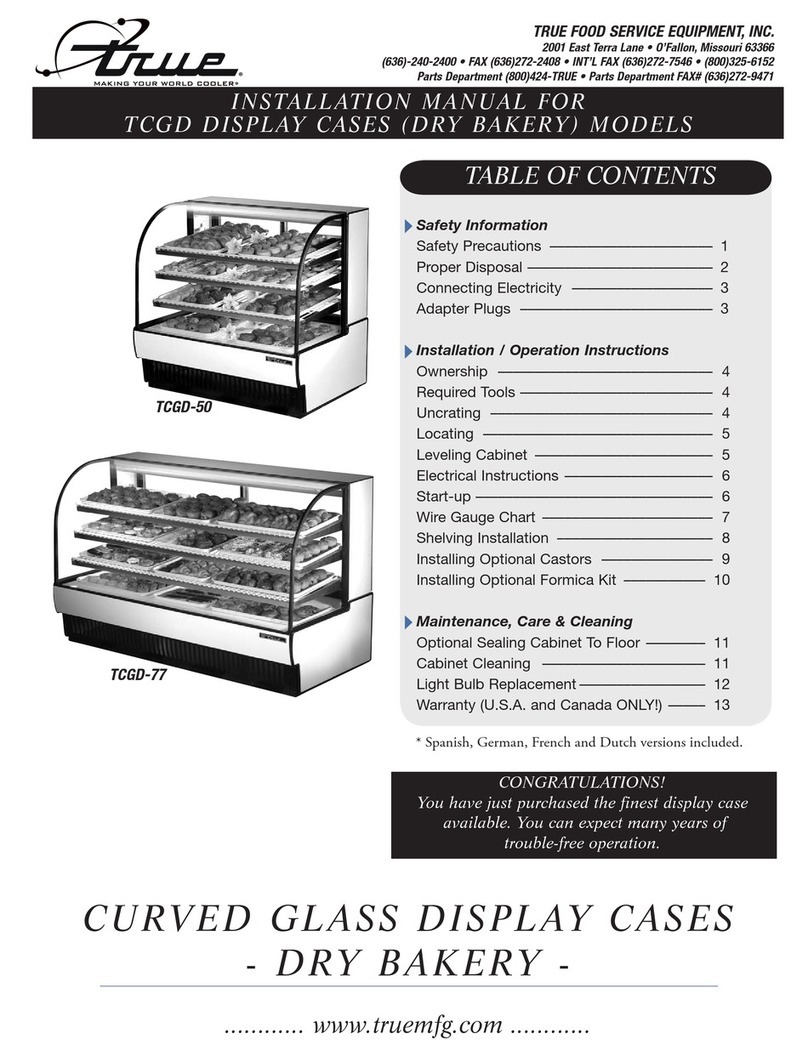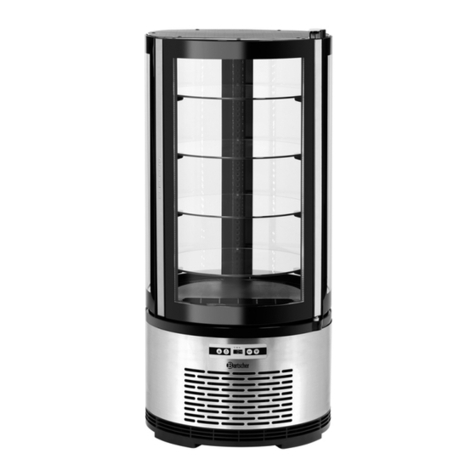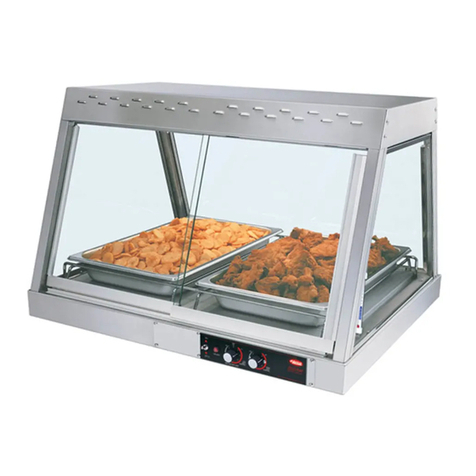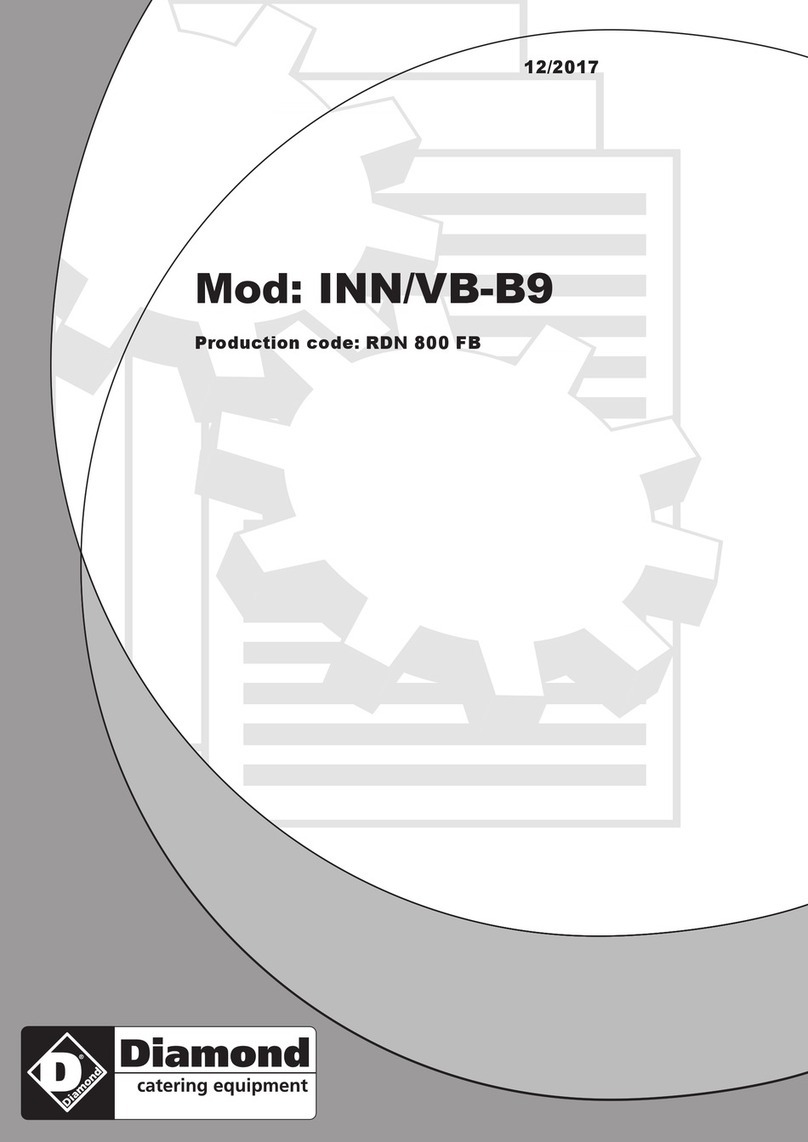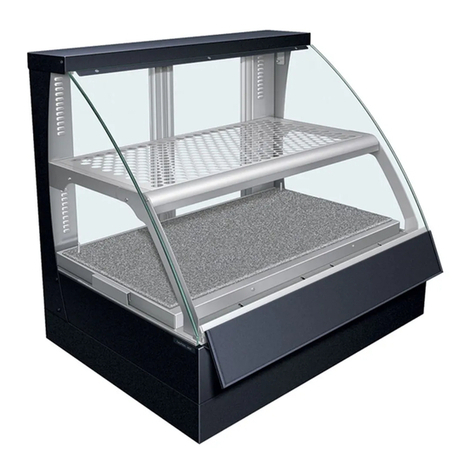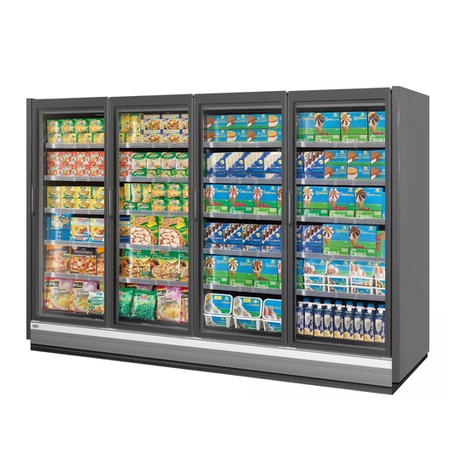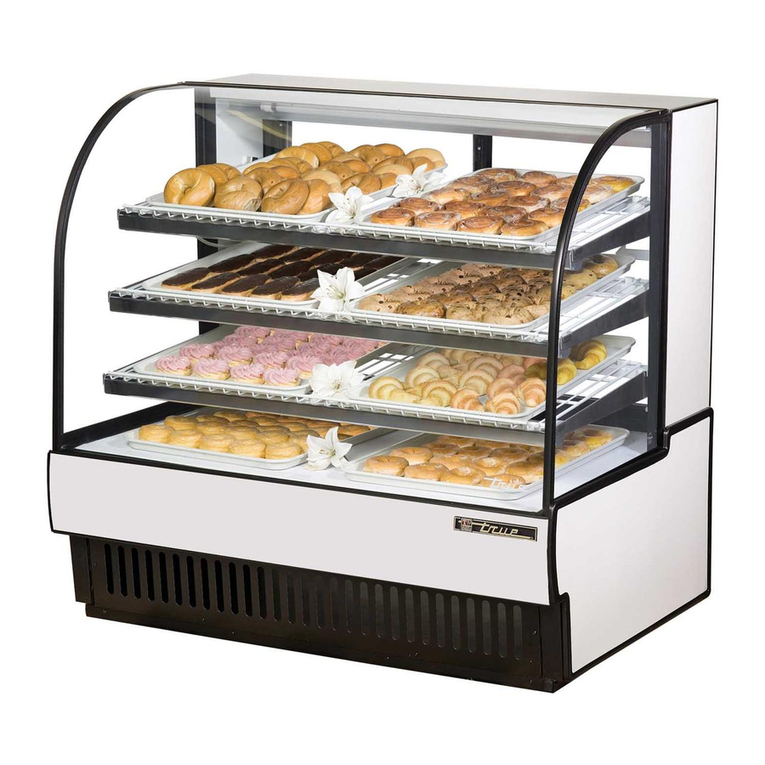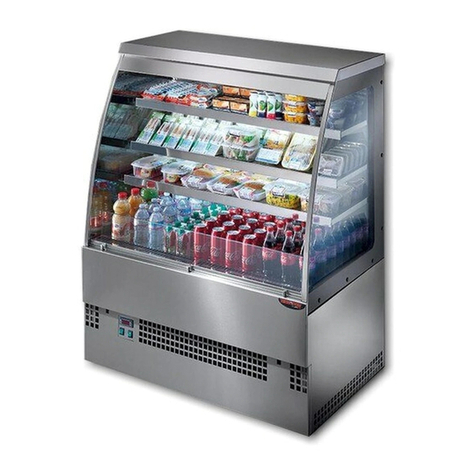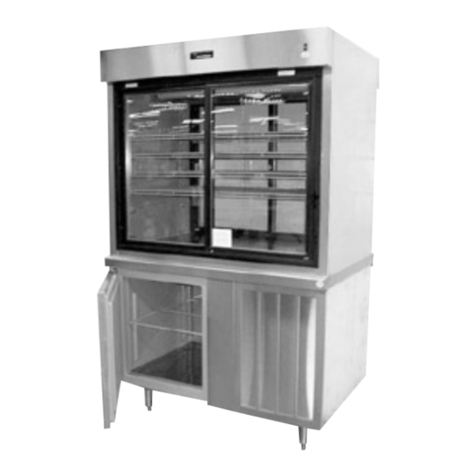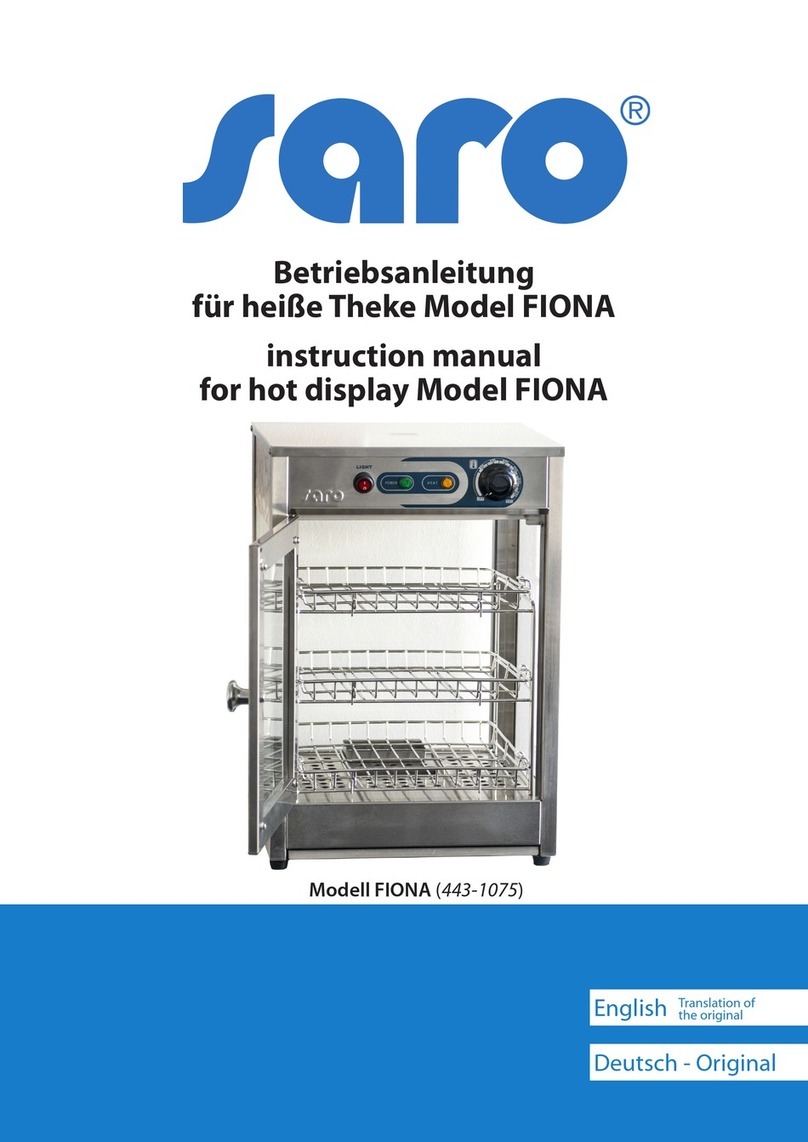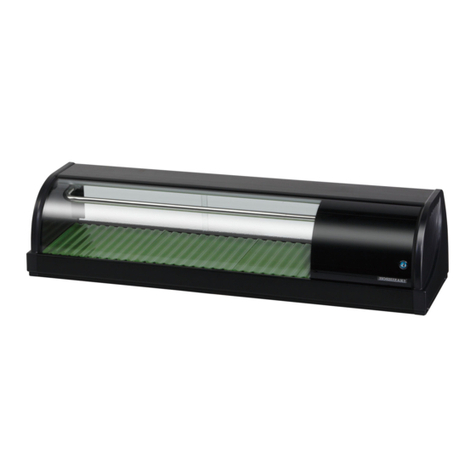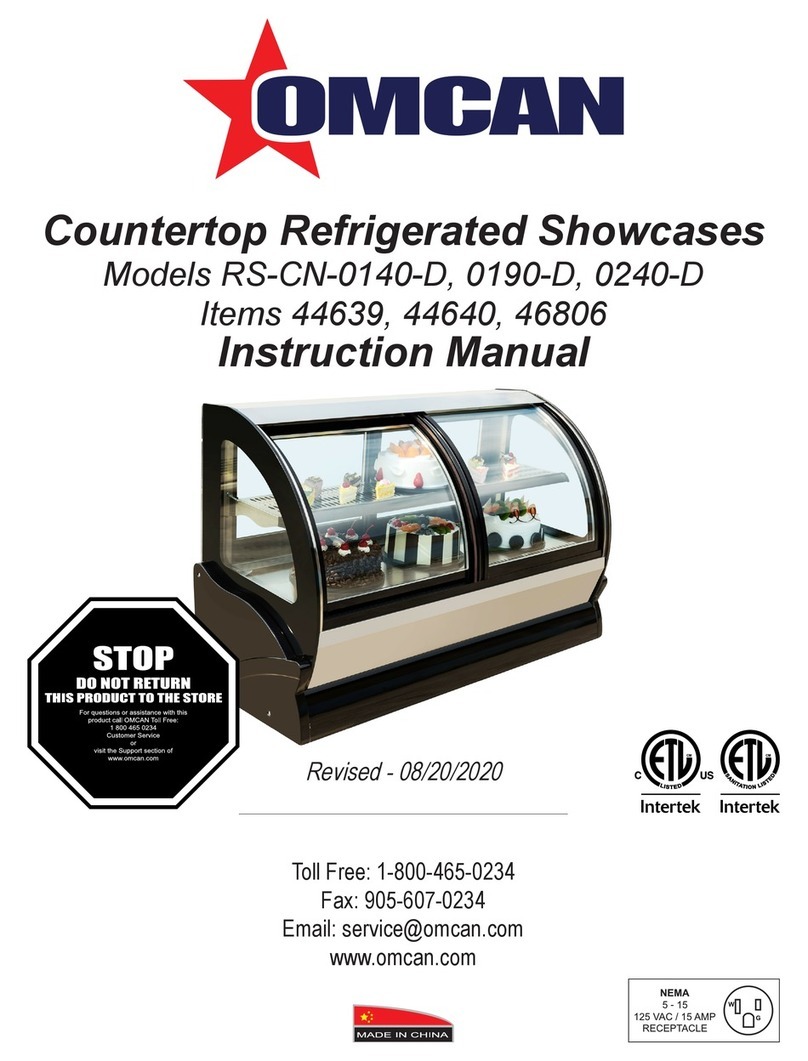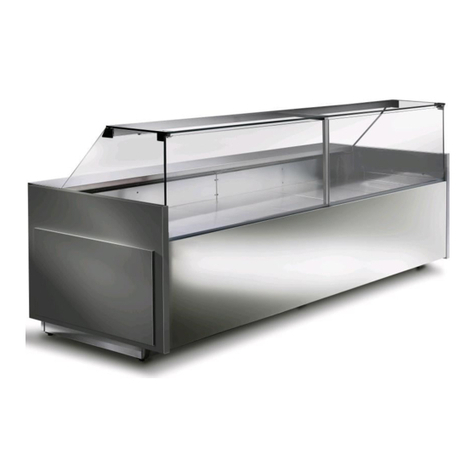
A010322 Rev. 2 Pagina 6 di 16
6.2 Electrical connections
Connections must be made in accordance with the local standards in force. The equipment’s electric circuit is designed to work with a
single-phase supply voltage of 230 Volts and a frequency of 50 Hz.
The equipment is connected by means of the power cable D (Fig. 2) which comes out of an opening at the bottom of the upright.
The cable must have the features of type H05 RNF or better, and must feature an efficient earth wire of an appropriate size for the total
power of this unit and any other units or accessories connected on the same terminal board (see rating plate).
The unit’s electrical supply system must feature an appropriately sized automatic omnipolar circuit breaker upstream that assures a gap
between the contacts of at least 3mm. There must not be any breaks in the earth cable.
The electrical safety of this equipment is only assured when the above-mentioned conditions are met.
NOTE: This unit has a “Y” electrical connection and, therefore, if the power cable is every replaced, the work must be
performed by a qualified electrician ONLY.
The manufacturer declines all responsibility in the event these safety standards are not complied with.
7. OPERATION / USE
7.1 Operating tips
•Avoid placing hot foods or evaporating liquids inside the unit.
•Only keep the doors open for as long as it takes to put the food inside or take it out.
•Do not cover the top of the unit as this might impede the flow of air.
•Before using the equipment for the first time, clean it inside with lukewarm water and neutral soap. Avoid using abrasive detergents or
scouring powders. Lastly, rinse and dry thoroughly.
7.2 Starting up
•Turn on the circuit breaker located upstream from the equipment.
•Switch on the digital thermostat Aof Fig.1 by pressing the buttom 4for at least 5” time (see picture)
•If the temperature in the refrigerated unit is higher than the thermostat value, the compressor starts working and the thermostat’s
LED 6comes on.
•The lighting inside the showcase is switched on by pressing switch B.
7.3 Digital thermostat
Legend
1 – Display
2 – “Increase value” push button, activates manual defrost
3 – “Decrease value” push button, manual alarm reset
4 – Press at least 5” to activate the stand-by function - “Exit function” push button
5 – “Access set point push button, accesses menus, confirms commands, displays
alarms
6 – Red LED on, compressor running
7 – Red LED on, defrost in progress
8 – Red LED on, alarm active, flashing when alarm silenced
USE
During normal operation, the instrument displays the temperature measured in the refrigerated area (showcase basin/top, compartment).
To display the current set point (selected temperature), press and release the key set, the message "set will appear, press again the key
set.
To modify the working set point, press and release the key set, the message "set will appear, press again the key set, the set value
appears, to modify it within 15 seconds use the push buttons ▲(2) or ▼(3) to increase or decrease the value; after modification, to
memorize, again press the key set.
The set point can be given any of the values within the established minimum and maximum temperature
The DEFROST can be activated at any time by pressing the key▲ (2) for at least 5 seconds; the next automatic defrost will occur starting
from this time after the time lapse for defrosting set by the manufacturer (factory set at 6 hours, and lasts 15 minutes).
WARNINGS AND ALARMS
‘E1’ on the display indicates that the thermostat probe is faulty indicating one of the following anomalies: incorrect type of basin
probe, defective probe, defective connections; check the condition of the probe and correct connection between instrument and probe.
“AH1” high temperature alarm on display indicates that the reading value is higher then the presetted max. value; it causes no effect to
the regulation, the alarm stops when the temperature decreases under the presetted max. value.
“AL1” low temperature alarm on display indicates that the reading value is lower then the presetted minimum value, it causes no effect
to the regulation, the alarm stops when the temperatures rises over the presetted minimum value.
The editing of the thermostat’s CONFIGURATION PARAMETERS, which are factory set, must be performed by qualified personnel only
according to the instructions attached.
7.4 Total switch-off
When the unit is to be mothballed for a lengthy period, the following measures must be taken:
•Switch off the unit with the master switch.
•Disconnect the power supply upstream.
•Remove all the food from the showcase and clean the inside as well as all the accessories.
•Leave the doors ajar so that fresh air can get inside, preventing undesirable smells from forming.
•Protect the stainless steel surfaces by smearing them with Vaseline oil: use a cloth soaked in the oil and rub vigorously.
•Air the room periodically
GB
